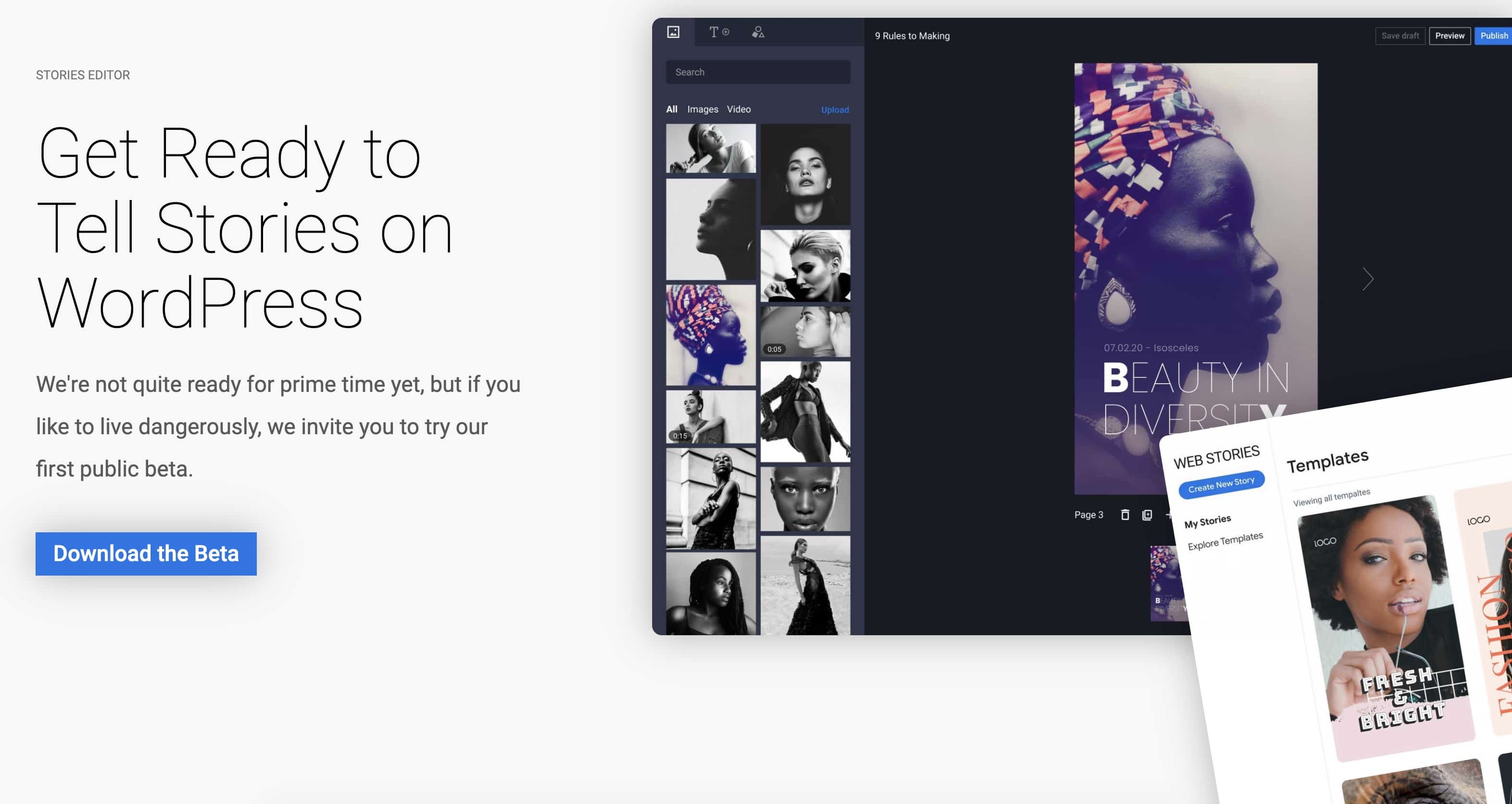
Why WordPress storytelling is now even better
Any successful publisher knows the value of a good story.
But is your organisation crafting stories or writing articles?
It’s subtle, but the terminology is worth getting your head around. Because the arrival of editorial ‘stories’ could well signal a major transformation in the future world of publishing.
So let’s start by defining the difference between an article and a story.
Articles vs. stories
As a publisher, the content typically referred to as an article is a text-heavy artefact that is easily readable on desktop, mobile, tablet, AMP, Apple News, etc.
Yet as the world of social continues to converge with the world of journalism, audiences are demanding richer, more aesthetically engaging content experiences.
The 2020 Reuters Institute Digital News report revealed the amount of users turning to Instagram for news has doubled since 2018, and two-thirds of people under 25 use the ‘snackable’ social media platform as a source of news.
But long-form content is generally the key to search engine optimisation (SEO), so online publishers are faced with a dilemma. Do you please Google, or do you please the mobile, snack-seeking audiences?
Here at The Code Company, we’re yet to meet a specialty publisher that’s keen to turn their website into a social media feed. Yet if publishers don’t follow audience cues, it poses a serious threat to their viability.
This is where ‘stories’ come in handy. Introduced by platforms like Instagram, Facebook and Snapchat, stories are a way of sharing narrative content in a visual way that expires in a shorter window of time.
It is easy to explain the popularity of stories. They offer a level of engagement that suits a wide spectrum of the population. Yet stories aren’t just great for audiences; they actually make great sense for publishers too. Stories are less time consuming to make than a podcast or a video and usually pack more punch than a text heavy post.
Why stories matter to publishers.
Convenience and ease aside, what makes stories so crucial for digital publishers is their ability to evoke emotion. Visually rich content has the power to move audiences beyond just a state of awareness, to a state of arousal and empathy (thanks to some help from oxytocin and dopamine). And from this emotionally connected place, the value of readers is transformed.
In fact, a study by the Harvard Business Review found that emotionally connected audiences:
- Are twice as valuable
- Consume more
- Visit your website more often
- Pay more attention
- Follow your advice
- Recommend you more often.
With this in mind, it’s no surprise that in June 2020, LinkedIn jumped on the stories bandwagon. The LinkedIn Stories feature is designed to stimulate greater creativity and includes the opportunity for users to post 20-second videos, photos and stickers.
How have publishers created online stories until now?
In their quest to create compelling storytelling experiences, publishers have mostly deferred to a specialty tool like Shorthand or Vev. These design tools are useful for crafting long-form content that looks impressive. The problem is, they don’t integrate natively. This lack of integration and analytics causes problems for serious publishers who are looking to commercialise their content.
How Google is solving the storytelling dilemma
So how do you solve the problem of longer form, media-rich storytelling in a way that is mobile-first and commercially viable?
Introducing Web Stories for WordPress. Led by Google, this plugin brings tappable, visual storytelling to the world’s most popular CMS. If you want to create content that looks and feels just like an Instagram or YouTube post, look no further. WordPress Story Editor has it all.
Take a look at how it works:
Why Web Stories for WordPress is important for online publishers:
The Code Company is the technology partner of many online publishers in Australia and the U.S. Our view is that Web Stories for WordPress offers huge potential to these ambitious organisations. This is a plugin with the power to re-shape how the entire publishing industry thinks and operates.
Web Stories for WordPress has a dazzling array of features. Think user-generated content, animations, gifs and a dedicated Newsroom Studio story editor.
Web Stories for WordPress – Features:
Here are the features we believe digital publishers will be most excited about:
- Mobile-first storytelling
- Creating more evergreen content
- Monetisation through display advertising and affiliate links
- Greater client collaboration through branded and native content.
If you’re looking for inspiration, here are a few examples different content types.
- Protecting the Antarctic, CNN
- Space photos of the week, Wired
- The best battle royale games on PC, PCGamesN
The potential challenges of Web Stories for WordPress
Web Stories for WordPress is likely on the radar of all serious publishers. But as with most new innovations, it doesn’t come without executional challenges.
Firstly, who creates the content? Even with the help of such a flexible tool, visual storytelling takes time and a certain degree of artistic flair. Journalists may lack the necessary skills. And even if they can manage, is visual design the most efficient use of an already lean news team?
In our view, the overall gain for digital publishers is worth some initial pain. By enlisting the help of content creators and editors in the early stages, organisations can develop templates and tip sheets. These upstream investments will help editorial teams transition more seamlessly into their new story-focused roles.
Where to from here?
Firstly, download the Web Stories for WordPress plugin and check out the features for yourself.
As tempting as it may be to dive right in and start telling stories make sure you stay aligned to your existing content strategy.
4 questions to kickstart your storytelling strategy:
- What have you learnt from your existing content strategy? Where can you improve?
- How can you create opportunities for native and bespoke advertising solutions?
- What evergreen content can you create to help build SEO?
- What types of content would work well as a story? E.g. explainer videos, news updates, photo gallery, etc.
If you’d like to chat about how The Code Company can help you to publish better please get in touch here.

